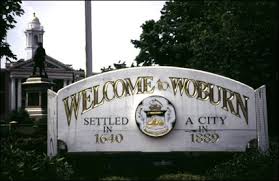Contamination in Our Communities: A Case Study of Woburn, Massachusetts
|
|
Welcome! This case study focuses on a childhood cancer cluster in Woburn, Massachusetts, a town 13 miles northwest of Boston. Between 1969 and 1986, twenty-one Woburn children were diagnosed with leukemia, and twelve died. Anne Anderson, the mother of one of these children, was the first to notice that too many children in her neighborhood were being diagnosed with leukemia. Since then, hazardous chemicals dumped by local industry, which subsequently contaminated the drinking water supply, have been linked with the excess incidences of cancer. Throughout this case study, we will use Woburn as an example to illustrate how to find environmental and health data, and explain how rates of disease can be calculated to help answer the question: 'Is this community experiencing unusual health problems?' |
Learning Objectives:
After completing this case study the student will be able to:
- Identify and describe resources available to collect environmental and health data on a community.
- Describe the properties and major sources of volatile organic compounds, such as TCE, and predict how they behave in environmental media.
- Collect current data on the toxicity of a xenobiotic.
- Outline pathways for human exposure to environmental health hazards in Woburn.
- Estimate the burden and patterns of disease in communities in order to prioritize health needs.
- Calculate the SIR (Standardized Incidence Ratio) and SMR (Standardized Mortality Ratio) and interpret the results to determine whether a community is experiencing an unusually high rate of a disease.
- Describe the origins of the Superfund law and analyze the challenges faced when implementing the law to clean up the nation's hazardous waste sites.
